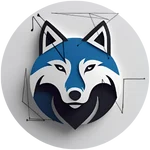Advertisements
Your Personal Botanical Guide: Free Apps to Explore Flora
Now that we understand the power of plant identification apps and how to choose the right one, it's time to discover the tools that will allow you to become a digital botanical expert.
In this second part, we'll introduce you to some of the best free apps available, analyzing their features, functionalities, and advantages so you can begin exploring the plant world with your phone.
Advertisements
What are the most effective free apps for plant recognition?
The plant identification app market offers a wide variety of free options, each with its own strengths and weaknesses. In this section, we'll focus on those that stand out for their accuracy, ease of use, additional features, and user community.
We'll take a detailed look at how they work, what benefits they offer, and what their limitations are, so you can choose the app that best suits your needs and preferences.
Advertisements
See also
- Relief for Your Spine and Hip
- Analyze your car in 30 seconds
- Boost your phone with Volume!
- Find out who unfollowed you on social media
- Joy Tea: more energy, less tiredness
PlantNet: A collaborative project for citizen science
PlantNet is a free app developed by a citizen science project that seeks to collect data on plant biodiversity through user contributions.
- What is it? PlantNet allows you to identify plants from photos taken with your phone. The app compares the images with an extensive collaborative database, fed by contributions from other users and experts.
- How does it work? Simply take a photo of the plant's leaf, flower, fruit, or bark and upload it to the app. PlantNet will provide you with a list of possible identifications, along with photos and information about each species.
- Benefits:
- Free and easy to use.
- High accuracy thanks to the collaborative database.
- Allows you to contribute to citizen science.
- Identify a wide variety of plants, including wild and cultivated.
- Limitations:
- Accuracy may vary depending on photo quality and plant rarity.
- Requires internet connection to work.
Google Lens: Artificial intelligence at the service of botany
Google Lens is an image recognition tool developed by Google that, in addition to identifying objects and text, can also recognize plants.
- What is it? Google Lens is a feature built into the Google app (and available as a standalone app on select devices) that uses your phone's camera to search for information about what it sees.
- How does it work? Point your phone's camera at a plant and Google Lens will show you information about its name, characteristics, and, in some cases, even links to web pages with more details.
- Benefits:
- Easy to use if you already use the Google app.
- Identify a wide variety of objects, including plants.
- Provides links to additional information on the web.
- Limitations:
- Plant identification accuracy may be lower than with specialized apps.
- It depends on the internet connection.
Seek by iNaturalist: Learn about nature while you play
Seek by iNaturalist is an app developed by iNaturalist, a citizen science platform, that uses gamification to make plant and animal identification more fun and educational.
- What is it? Seek lets you identify plants and animals from photos taken with your phone, and awards you badges and challenges as you discover new species.
- How does it work? Point your phone's camera at a plant, and Seek will provide its name and taxonomic classification. The app will also show you information about the plant and its role in the ecosystem.
- Benefits:
- Fun and friendly interface, ideal for kids and beginners.
- Promotes learning about nature and conservation.
- Identify both plants and animals.
- No user registration required, protecting privacy.
- Limitations:
- Accuracy may be lower than in more specialized apps.
- Relies on internet connection for some functionality.
Comparison of the Best Free Apps
To help you choose the app that best suits your needs, we present a comparison table with the main features of each one:
| Feature | PlantNet | Google Lens | Seek by iNaturalist |
|---|---|---|---|
| Model | Free, collaborative | Free, integrated into Google | Free, gamified |
| Precision | High, thanks to the collaborative database | Average, may be lower than in specialized apps | Media, focused on learning and fun |
| Ease of use | Intuitive, easy to use | Easy to use if you already use Google | Very friendly, ideal for children |
| Features | Plant identification, contribution to citizen science | Identifying plants and other objects, searching for information on the web | Plant and animal identification, gamification, learning about nature |
| Internet connection | Required | Required | Required for some features |
| Privacy | The data contributes to the collaborative database | Data is used to improve Google services | No user registration required |
| Ideal for | Nature lovers, amateur botanists, people interested in citizen science | Users who already use Google and are looking for a versatile tool | Children, beginners, people interested in learning about nature in a fun way |
Choosing the ideal app for identifying plants will depend on your priorities and preferences. If you're looking for the highest accuracy and interested in contributing to citizen science, PlantNet is an excellent option. If you already use Google and want a versatile tool for identifying various objects, Google Lens may be sufficient. And if you're looking for a fun and educational experience, especially for children, Seek by iNaturalist is the best option.
In Part 3, we'll give you practical tips to get the most out of these apps, from how to take the best photos to how to interpret the results and deepen your botanical knowledge. Don't miss it!






